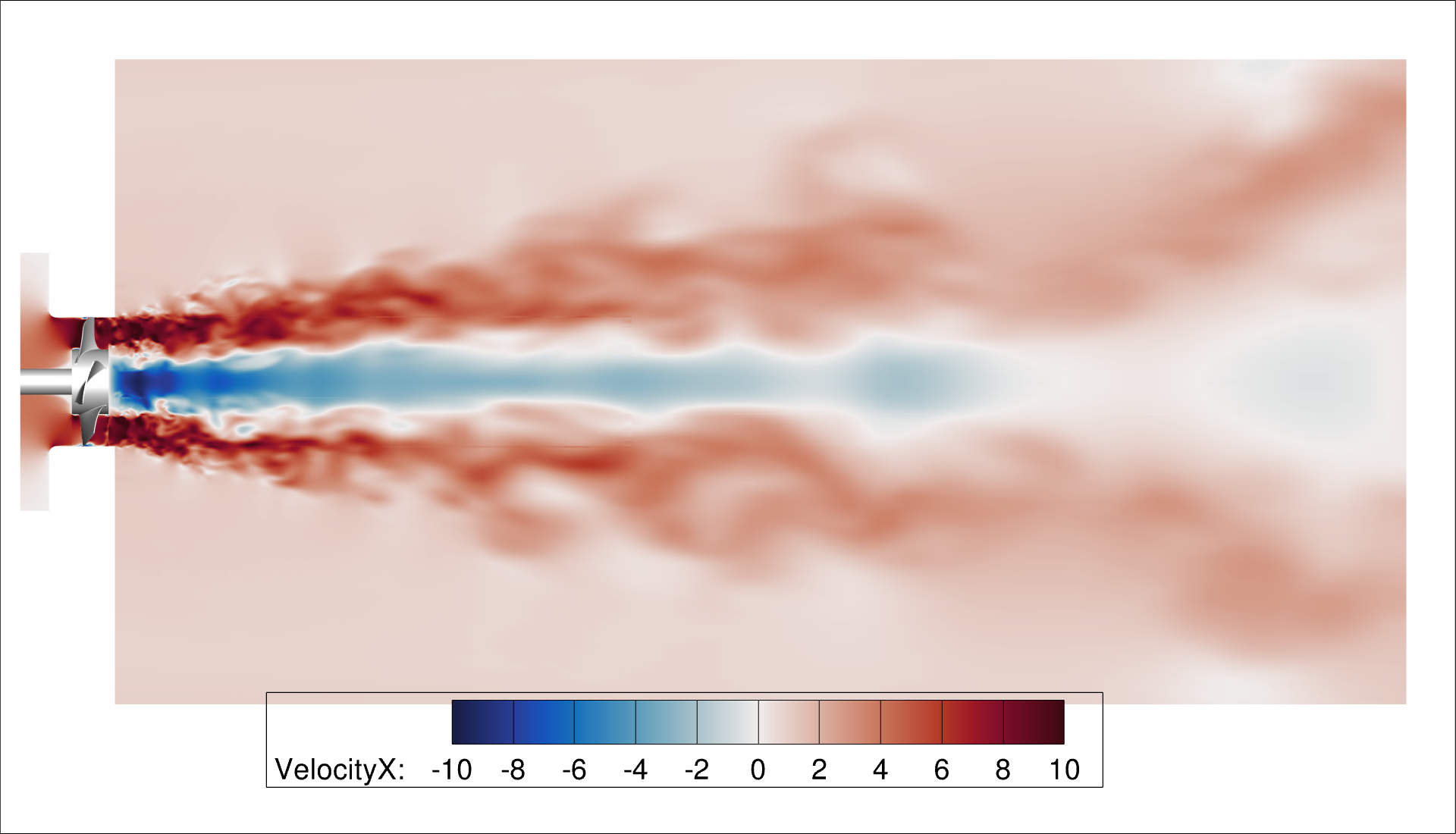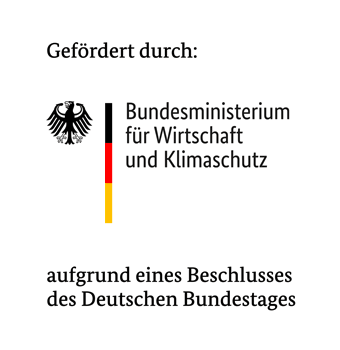This research project was completed on 31.10.2023. The detailed final report can be viewed in the IFAS library.
Low-pressure axial fans are used in a wide range of applications to provide large volumetric flow rates at low pressure ratios. A characteristic feature of low-pressure axial fans is that they are commonly installed without outlet guide vanes due to cost or space constraints or for acoustic reasons. This leads to a strong swirl (circumferential velocity component) in the outflow. The circumferential velocity component results in inertial forces, which cause the static pressure to fall monotonically in the direction of the core of the flow (radial equilibrium). As a result, the mean pressure in the downstream flow of the fan is below atmospheric pressure. Due to the dissipation of the flow velocity in the fan discharge, the static pressure approaches the atmospheric pressure - effectively a static pressure recovery takes place, which increases the total static efficiency.
In order to gain a fundamental physical understanding of static pressure recovery, an analytical description of the problem was first derived. The basis for this is the momentum balance in the radial direction. The two main causes of static pressure recovery were derived from this description: Inertial forces caused by the circumferential component of the flow velocity (radial equilibrium) and streamline curvature. In order to investigate the influence of the fan design on these causes, different fans with varying vortex designs were designed using a modified in-house method.
Three of the newly designed fans were investigated experimentally using 5-hole probe measurements as well as PIV and hot-wire measurements. Since the streamline curvature in the fan outflow is one of the key flow variables that cannot be measured with the methods mentioned above, or only to a limited extent, the extensive database created here primarily serves to validate the numerical investigations that were also carried out. It has been shown in this work that standard RANS methods are not capable of correctly reproducing the free outflows of the fans investigated here. Accordingly, Delayed Detached Eddy Simulations (DDES) were used to carry out investigations with a reduced degree of modeling. In contrast to the RANS simulations, the results of these investigations agree very well with the experimental data.
A sensitivity study carried out using the experimentally validated numerical method (DDES) with several fans with a varying vortex design has shown that the influence of the inertial forces on the pressure recovery can be significantly influenced by the fan design. In contrast to this, it was observed that the streamline curvature has a negative influence on the pressure recovery for all the fans investigated and is also only slightly influenced by a variation of the vortex design. By considering the pressure recovery in the total static fan efficiency, the optimum vortex design clearly deviates from the usual designs with minimum dynamic pressure in the outflow.

